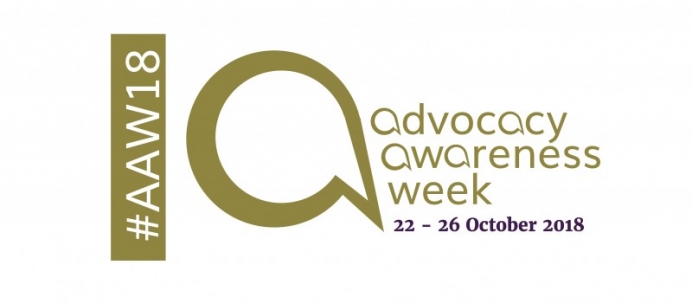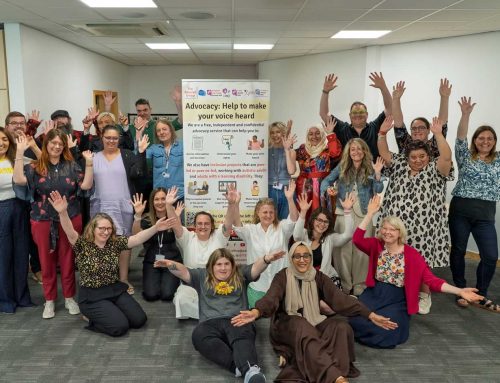By Gill Loomes, Leeds Autism AIM Peer Development Worker
Welcome to Part 2 in this mini-series for Advocacy Awareness Week 2018, called “Finding our Voice”, in which we are exploring “Voice” and what it means for advocacy. In Part 1, we introduced Advocacy Awareness Week, and began to think about how we explain advocacy, in order to raise awareness. We identified that “Voice” is central to advocacy practice, and that this means more than literally the physical production of sound. In this part, begin to think about exactly what we mean by a social “Voice”.
What do we mean by “Voice”?
In order to understand what we mean by “voice” in a social sense, such as the “voice” in our explanation of advocacy, I explored what social research can tell us about “voice”, by searching social science literature. In doing this, I found a strong, overarching message:
Our social “voice” is a bridge between ourselves, and the world around us.
I’ll explain more about what I mean by this, but it is worth pausing to consider what this statement means in terms of advocacy. Our ability to connect, and to communicate with the world around us – to make our mark as individuals, and to influence others, is central to our humanity. It is a need, and a right in itself. And it exists alongside, but is independent of the goals and objectives that we seek to obtain through our “voice”.
Those are of course important. But they are by no means the “be all and end all” of our “voice”. So when we explain that advocacy is about supporting people to have a “voice”, we are claiming a role in enabling people to exercise an aspect of their humanity, and to find their place in the social world.
Let me explain a little more about what I mean, when I say that the “voice” is a bridge between us, and the world around us.
“Voice” as a bridge
In my research, I found five key ways in which “voice” is used to create a “bridge” between the individual and the social world. I found that “voice” can mean:
- Identity-building
- Self-expression
- Social participation
- Advocacy (in a narrow sense)[1]
- Social Disruption
In the next part of this mini-series, we will explore each of these aspects of social “Voice”, and think about what they mean for advocacy. Look out for Part 3 of “Finding our Voice”.
[1] In my research, I found examples of “voice” used to describe advocacy, in the strict, narrow sense of speaking up on behalf of individuals, groups, or communities, in order to achieve positive changes in their circumstances. It is important that I clarify though, given the context in which I’m writing here, that while the primary aim of the work of advocacy organizations will undoubtedly be to undertake this narrow form of advocacy, I would argue strongly that the work we do with individuals and groups can, and does yield the full range of opportunities for the strengthening of each of the other 5 aspects of “voice” that I explain here. So, as we support individuals to pursue the issues, and to express the views that are important to them; we are likely to see their identity, their ability to make decisions, to express themselves, and to participate socially increase as a result.[/vc_column_text][vc_empty_space][vc_separator color=”black” border_width=”5″][vc_empty_space][vc_column_text]












